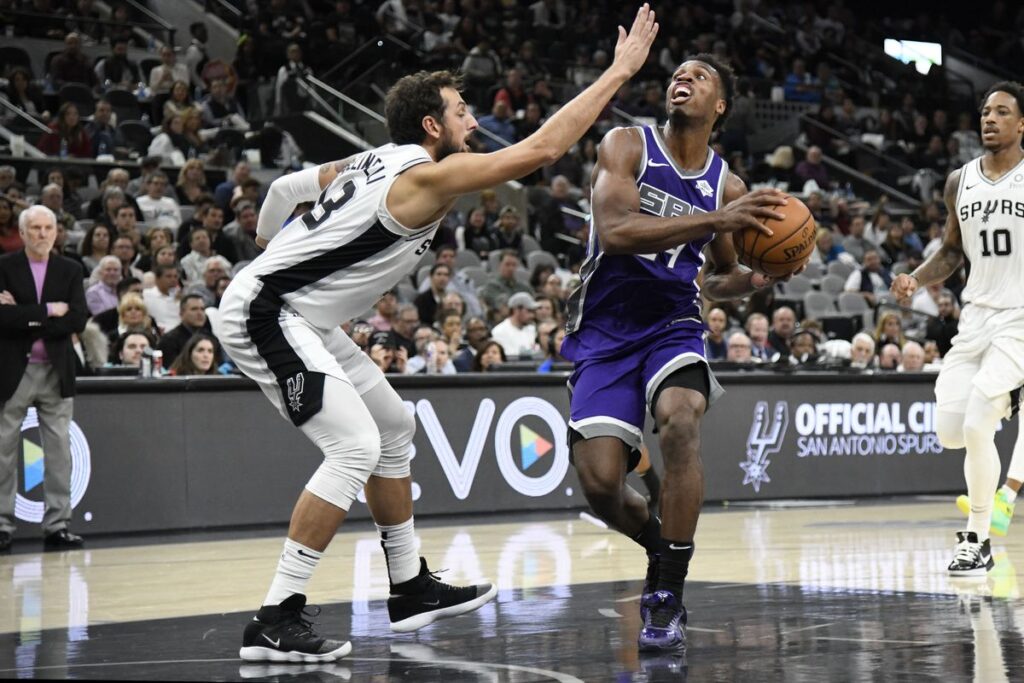
The 7th post in Defensive Fundamentals and Teaching Points series will be on perhaps the most important piece – transition defense, arguably the cornerstone to any solid defensive program. We’ve previously spent considerable time discussing half court philosophy and technique, but if we don’t transition to the defensive end effectively on missed shots, we won’t even have the opportunity to set our defense.
First, let’s digress a moment. When we discussed blocking out, we referred to a spectrum-where at one end all five players blocked out feverishly, likely using front pivots and rebounding the ball low and late, but safely. This method doesn’t allow for even a fair fast break going the other way. To get the best opportunity to allow as few offensive rebounds as possible, the coach who embraces this system sacrifices a good fast break to do so. On the other hand, the coach who teaches quickness to the blockout and the ball and guards leaking or going to outlet spots, won’t sacrifice his fast break. But he is more willing to gamble on giving up some offensive rebounds.
So too with transition defense we have the same conundrum at the other end of the floor. How many players do we have go to the offensive glass and how many start to transition back on a shot? It’s exactly the same type of spectrum. If you send all 5 players back on D on a shot, you will have the best opportunity to set your defense. (Actually, in many NBA games and some NCAA games, you will see this if the shooter is on the perimeter. When the talent level and fast break acumen of certain teams is very high, some coaches invest all resources to stop the primary break). Then, there’s the other end of the spectrum where a coach will have 4 players crash the boards and send one guard back. (In late game situations, coaches will sometimes send all 5 to the glass). Then, of course, there are the options in the middle of the spectrum-sending 2 or 3 players back on D on a shot.
So the question becomes where one is on the spectrum, and the rationale behind it.
One might play many opponents with good or great breaks; one might have 2 or 3 exceptional offensive rebounders or any one of many other variables.
Whatever method one chooses, there are still tried and true principles to utilize:
- Transition defense needs to be practiced in a “real” way. When I watch “3 on 2 Continuous” or “3 on 2 to 2 on 1” drills (including my own), I always say to myself, “This isn’t real enough!” The most real way is “5 on 5 Live Transition” in which your scout team defense goes to the other end on a make, miss or turnover.
- For now, assume that you’ve decided to send two men back. Tandem assignments need to be made. The tandem sprints back and the players get in their stances.
- Like most tandems, the man with the ball can’t get an uncontested shot or get into the lane with the bounce.
- The first pass receiver can’t get an uncontested shot or get into the lane with the bounce. (Most teams try to execute #’s 2, 3 and 4.)
- The three other players in defensive transition have to run back as hard as they can every time. (Most teams talk about this like it’s good idea).
- The other three players have to locate the ball and their men WHILE they’re running back full speed.
- The other three players run straight to their ‘ball-you-man” spots. (Not necessarily the middle of the lane. Their man could conceivably be one pass away).
- If one of the other 3 player’s men is already being covered by a teammate, he has to go his teammate’s man’s “ball-you-man-spot”. (Most teams don’t even try to execute #’s 6, 7 and 8).
- If the defense stops the primary break, the breaking team should have been assigned some form of secondary break so that the defense has to transition immediately to an ongoing attack. Motion or a high-screen roll are easiest to execute-after that program’s own secondary break. (A team that consistently stops both primary and secondary breaks will be very tough to beat on this attribute alone).
- If you send 3, 4 or 5 men back, all of the above 9 teaching points become even less stressful to the defense and pose an incrementally better chance to stop both primary and secondary breaks with every extra player to get back on D on the shot.
Where one sits on this transition defense spectrum is yet another risk/reward question one might ask of oneself this summer.



Very well-thought out and excellent teaching points! I would go so far as to say that transition defense even begins BEFORE the shot goes up, as players must be considering who has back responsibility to protect against the break. Depending upon your philosophy of how many go to the “O” boards, players must be thinking about where they are on the floor when the shot goes up, so as to ascertain if they have back responsibility or if they can go to the glass. Very timely article for me, as we were just working on this concept last night with our team. Thanks for sharing.